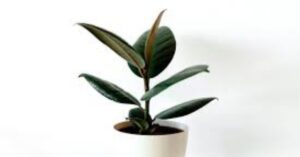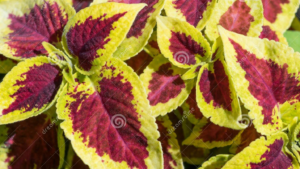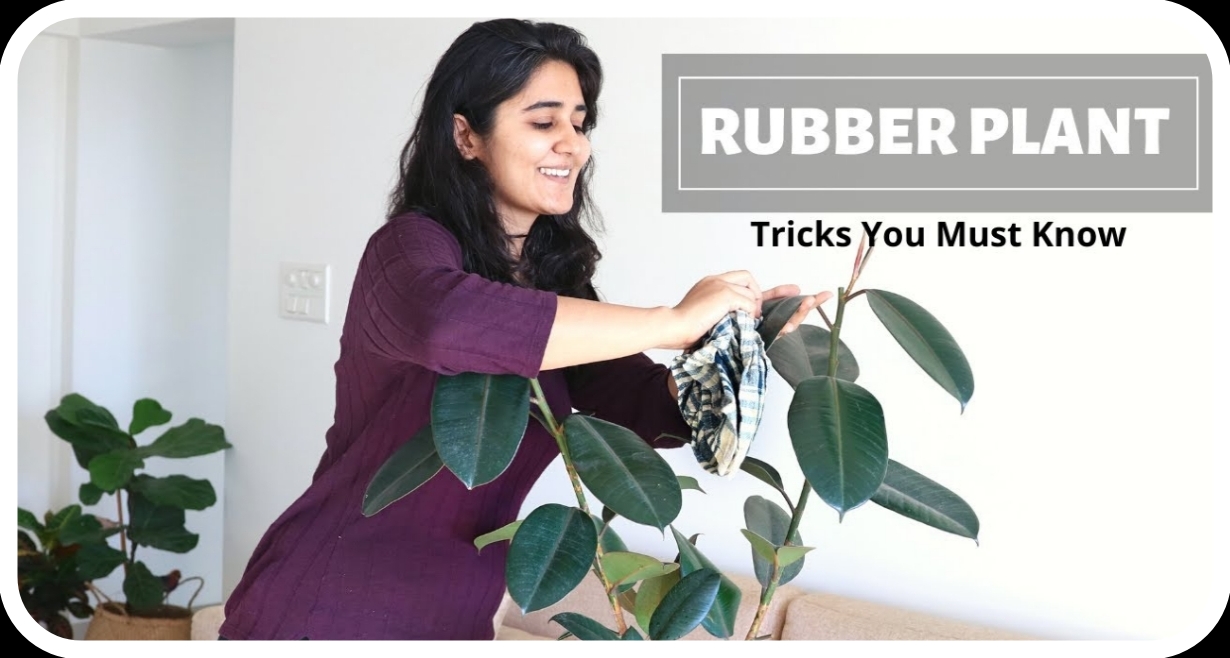With their striking dark green foliage tinged with Burgundy Rubber Plants care are cherished for their captivating appearance and hassle-free upkeep, making them a favored choice among houseplant enthusiasts. Sporting almost black leaves, this variety, scientifically known as Ficus elastica ‘Burgundy’, adds a touch of dramatic elegance to any indoor space. While they can soar to impressive heights of up to 30 feet when grown outdoors, indoors they typically reach a more manageable eight feet, starting as petite potted plants before gradually maturing over the years. However, it’s essential for pet owners and parents to note that these charming plants are toxic to pets if consumed.

Here’s a table summarizing the key information about growing and caring for Burgundy Rubber Plants indoors:
Aspect Details
Common Name Burgundy Rubber Plant
Botanical Name Ficus elastica ‘Burgundy’
Family Moraceae
Plant Type Tree
Mature Size 8 ft. tall, 2-3 ft. wide (indoors)
Sun Exposure Full, partial
Soil Type Moist but well-drained
Soil pH Acidic
Bloom Time Spring, summer (rarely flowers indoors)
Flower Color Green, white
Hardiness Zones 10-12, USDA
Native Area Asia
Toxicity Toxic to pets
BURGUNDY RUBBER PLANT TREE ♣
Burgundy Rubber Plants, with their striking foliage and easy-going nature, thrive with proper care. Here’s a comprehensive guide to keeping your Burgundy Rubber Plant healthy and vibrant:
Light: Place your Burgundy Rubber Plant in a location with bright, indirect sunlight. Avoid direct sunlight, as it can scorch the leaves. In low-light conditions, growth may slow down.
Watering: Keep the soil consistently moist but not waterlogged. Water when the top inch of soil feels dry to the touch, typically every 1-2 weeks. Ensure proper drainage to prevent root rot.
Temperature: Maintain temperatures between 60-80°F (16-27°C) for optimal growth. Protect the plant from drafts and sudden temperature fluctuations.
Humidity: Burgundy Rubber Plants prefer high humidity. Mist the leaves regularly or place the plant on a pebble tray filled with water to increase humidity levels. Alternatively, use a room humidifier.
Soil: Use a well-draining, peat-based potting mix to ensure adequate aeration and moisture retention. A slightly acidic soil pH is ideal for these plants.
Fertilization: Feed your Burgundy Rubber Plant with a balanced liquid fertilizer diluted to half strength every 2-4 weeks during the growing season (spring and summer). Avoid fertilizing during the winter months.
Pruning: Trim off any yellow or damaged leaves to maintain the plant’s appearance and encourage new growth. You can also prune to control the plant’s size and shape.
Repotting: Repot your Burgundy Rubber Plant every 1-2 years, or when the roots outgrow the pot. Choose a pot that is one size larger and refresh the soil to provide fresh nutrients.
Pests: Keep an eye out for common houseplant pests like aphids, mealybugs, and spider mites. If detected, treat promptly with insecticidal soap or neem oil.
Toxicity: Remember that Burgundy Rubber Plants are toxic to pets if ingested. Keep them out of reach of curious pets and children.
tPROPAGATING BURGUNDY RUBBER PLANT ♣
Propagating a Burgundy Rubber Plant can be an exciting way to expand your plant collection or share it with friends. Here’s a step-by-step guide to propagating your Burgundy Rubber Plant:
Select a Healthy Stem Cutting: Choose a healthy stem from the Burgundy Rubber Plant. Look for a stem that is mature but still flexible, with at least two sets of leaves.
Prepare the Cutting: Use a clean, sharp knife or scissors to cut a 4-6 inch section of the stem just below a node (where leaves emerge). Remove any leaves from the bottom half of the cutting to expose the nodes.
Optional: Apply Rooting Hormone (Optional): To encourage root growth, you can dip the cut end of the stem into a rooting hormone powder or gel. This step is optional but can enhance the success of propagation.
Plant the Cutting: Plant the stem cutting in a small pot filled with well-draining potting mix. Make a hole in the soil with your finger or a pencil and insert the cutting, ensuring that at least one node is buried in the soil.
Provide Optimal Conditions: Place the pot in a warm, bright location with indirect sunlight. Maintain high humidity around the cutting by covering it with a clear plastic bag or placing it in a propagation box.
Watering: Keep the soil lightly moist but not waterlogged. Water the cutting whenever the top inch of soil feels dry to the touch. Avoid overwatering, as this can lead to rot.
Monitor Growth: Check the cutting regularly for signs of new growth, such as emerging leaves or roots. This process can take several weeks to a few months, so be patient.
Transplanting: Once the cutting has developed a healthy root system and new growth, you can transplant it into a larger pot with regular potting soil. Continue caring for the plant as you would for a mature Burgundy Rubber Plant.
COMMON PESTS PLANT DISEASE ♣
Pests:
Spider Mites: These tiny pests can suck the sap from the leaves, causing them to appear stippled or discolored. You may also notice webbing on the plant. Spider mites thrive in dry conditions, so increasing humidity can help deter them.
Mealybugs: Mealybugs are small, white, cottony insects that feed on the plant’s sap. They often congregate in clusters on the undersides of leaves or in leaf axils. Use a cotton swab dipped in rubbing alcohol to remove them, or apply insecticidal soap.
Aphids: Aphids are small, soft-bodied insects that can be green, black, brown, or pink. They suck sap from the plant, causing leaves to curl or distort. Wash them off with a strong stream of water, or use insecticidal soap.
Scale Insects: Scale insects appear as small, brown or black bumps on the stems and leaves of the plant. They feed on plant sap and can cause leaf yellowing and stunted growth. Remove them manually with a soft brush or cotton swab, or use insecticidal oil
.
Diseases:
Root Rot: Overwatering or poorly draining soil can lead to root rot, which causes the plant’s roots to become mushy and discolored. To prevent root rot, allow the soil to dry out slightly between waterings and ensure adequate drainage.
Leaf Spot: Leaf spot diseases are caused by various fungi and bacteria and appear as dark, water-soaked spots on the leaves. Remove affected leaves and ensure good air circulation around the plant to prevent the spread of the disease.
Powdery Mildew: Powdery mildew appears as a white, powdery growth on the leaves and stems of the plant. It thrives in humid conditions. Improve air circulation, reduce humidity, and avoid overhead watering to prevent powdery mildew.
Fungal Leaf Drop: This disease causes the plant to drop its leaves prematurely. It is often caused by overwatering or poor air circulation. Adjust your watering schedule and ensure good ventilation around the plant to prevent fungal leaf drop.
COMMON PROBLEMS WITH BURGUNDY RUBBER PLANT ♣
Common problems with Burgundy Rubber Plants often revolve around environmental conditions and care routines. Overwatering is a frequent issue, leading to root rot and subsequent leaf yellowing or wilting. Conversely, underwatering can cause leaf drop or browning. Inconsistent light exposure, particularly too much direct sunlight, can scorch the leaves, while insufficient light can lead to leggy growth and leaf discoloration. Low humidity levels may result in leaf curling or browning at the tips. Additionally, pest infestations, such as spider mites or mealybugs, can diminish the plant’s health if left unchecked. Regularly monitoring the plant’s moisture levels, light exposure, and overall health can help prevent and address these common problems, ensuring a thriving Burgundy Rubber Plant.
LEGGY GROWTH ♣
Leggy growth in Burgundy Rubber Plants typically occurs when the plant is not receiving adequate light or when it’s stretching towards a light source. This phenomenon results in elongated stems with sparse leaves, diminishing the plant’s aesthetic appeal. To address leggy growth, relocate the plant to a brighter location with indirect sunlight to encourage compact and bushy growth. Additionally, rotating the plant regularly can promote balanced growth on all sides. Pruning leggy stems can also help stimulate new growth and maintain a more desirable shape. With proper light exposure and occasional pruning, you can prevent leggy growth and maintain a lush and healthy Burgundy Rubber Plant.
YELLOW LEAVES ♣

Yellow leaves on a Burgundy Rubber Plant can indicate various issues, including overwatering, underwatering, or exposure to cold drafts. Overwatering can lead to root rot, causing the leaves to turn yellow and eventually drop. Conversely, underwatering can cause dehydration and yellowing of the lower leaves. Cold drafts can also stress the plant, resulting in yellowing leaves. To address yellow leaves, assess the plant’s watering schedule, ensuring that it receives water only when the top inch of soil is dry. Avoid placing the plant near drafty windows or doors, and maintain a consistent temperature range between 60-80°F (16-27°C). Trim away any yellowed leaves to promote new growth and maintain the plant’s health.


















